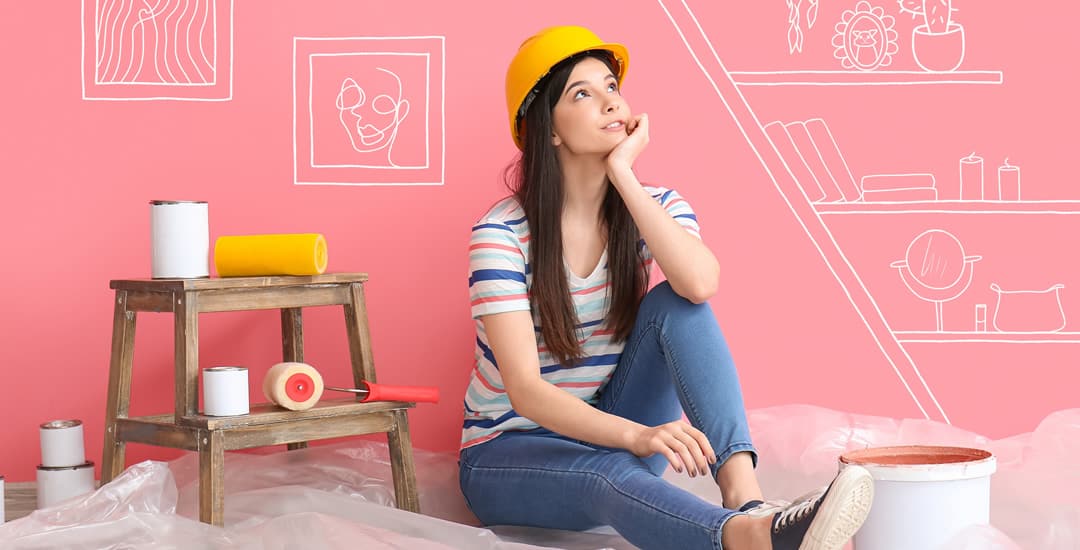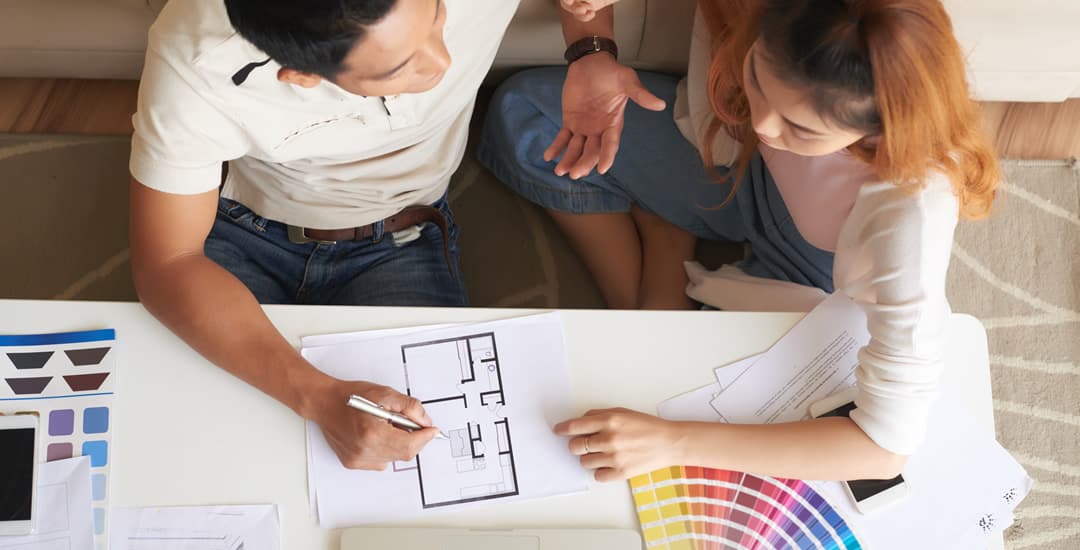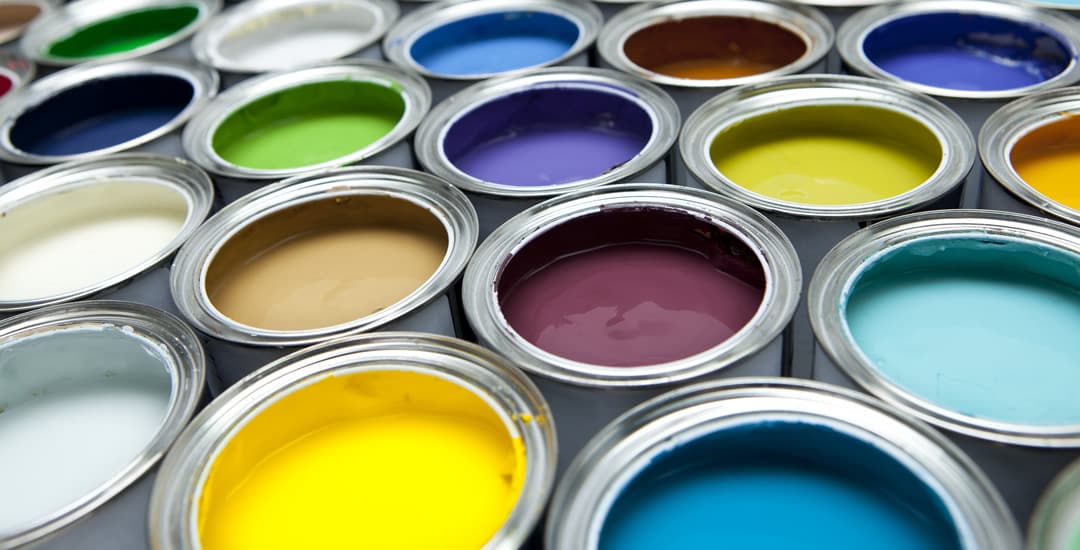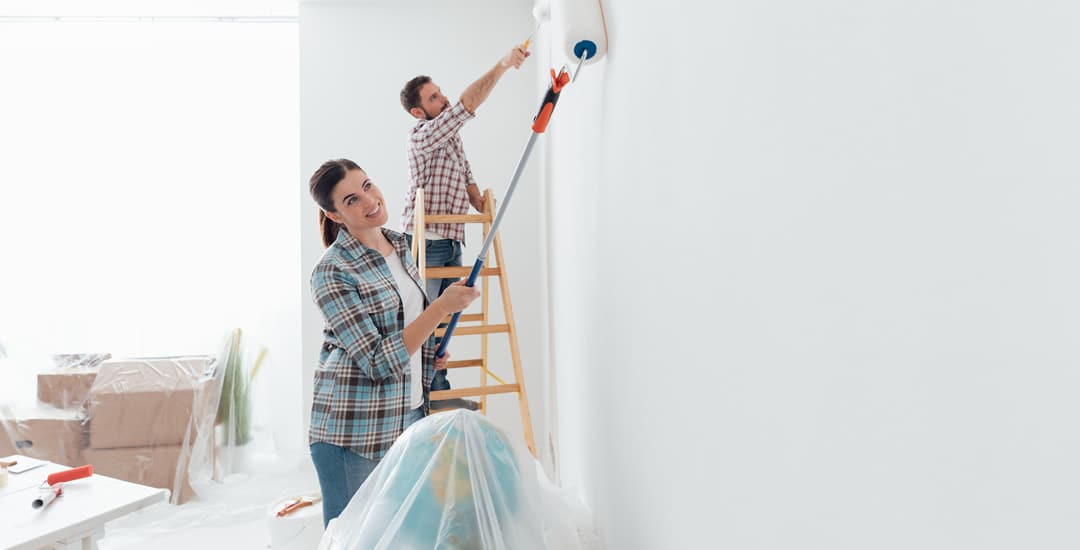
What do you start with when decorating a room? A cup of coffee. By which I really mean, a plan. To decorate a room to the best of your ability, you need to put the brakes on your painting hand and work things through in your head and/or on paper first, before you start making big decisions and putting your choices into action!
This blog post will tell you what needs to go into your decorating plan, and what order to decorate in.
What do you start with when decorating a room?

You start with a budget and a plan. Which comes first in this respect can be variable for different people. If you know that financial constraints are going to be a big part of your ultimate project, your budget should come first; setting the amount you can spend (while factoring in a buffer for the unexpected) and then deciding how to break that figure down into its component parts.
If budget isn’t such a huge factor for you or if you have a reasonable amount of flexibility in that respect, then the plan might be part one and the budget, part two.
Either way, the only sensible answer to “what do you start with when decorating a room?” is “a plan, and a budget.”
What is the first step in decorating a room at the planning stage?

When it comes to drawing up your plan, you need to know exactly what you have to work with; hence the importance of making your budget an integral part of the plan.
Budget and finances aside, you also need to know what you have to work with in terms of the room itself; how dramatic or extensive of a redecorating project are you looking at here, and what can/are you going to change, versus what is going to remain intact?
If you’re decorating a new room (such as within a newly built home or one that’s been taken back to literal bare floors and walls already), this stage doesn’t really apply to you, unless you’re planning on remodelling the room too by adding or changing windows or a partition wall or something else fairly large-scale!
For everyone else though, this bears some consideration. For instance, for some people, decorating a room means simply changing things like the art, and the colour or type of cushions and throws, while for most people this would be classed as a refresh rather than as decorating.
Others might change/replace the furniture and perhaps light fittings, while others (and perhaps this one provides the most widely-accepted definition of decorating) would change the floor coverings or flooring, paint or wallpaper, window coverings, and possibly light fittings too.
If there’s a fireplace or another integral fitting or feature, how this is tackled (if at all) is something to think about too.
So the first step in decorating a room at the planning stage is deciding what’s staying and what’s going, how deep you’re diving into things, and what needs to be worked around and to what extent.
What do you start with when decorating a room and drawing up the running order?

Only when you’ve got this far are you really ready to start drawing up the part of the plan that is the “doing” side of things! This means choosing a theme, style or mood, and the sort of colours you want for it; and doing your research into these things potentially too, such as learning more about various eras or design ethos’s, and/or if anything is likely to be contradictory to anything else.
Plan these things from the top down, in terms of both their size/impact and financial cost; so, with the biggest feature or part of the project (which is also usually the most expensive part too) first, then the second largest, and so on until you get right down into the finishing touches and fine details.
In what order do you decorate a room?

Everything looks good on paper… Logistically though? How do you even know where to start? There is a fairly formulaic order to which you decorate a room (potentially skipping some steps that don’t apply to you), and this is based on working from the outside in, or the top down, depending on how you find it easiest to visualise things.
For instance, you wouldn’t start hanging your new pictures on a wall that is going to be painted until the painting is finished; this is the sort of logic you need to follow in terms of the “layers” or working from the outside in/top down.
A general and logical decorating order (as I mention, skipping steps that aren’t relevant or that don’t apply to you) would look something like this, from first to last:
- Making any structural changes (adding or removing a fireplace, windows, partitions and so on).
- Adding or changing any fixings and fittings (light fittings, adding sockets and so on).
- Painting the ceiling.
- Painting or papering the walls.
- Painting/finishing trims such as skirting boards and around the windows.
- Hanging your blinds.
- Bringing in and staging the furniture.
- Putting up art (I suggest this comes after the furniture, as it will reduce the risk of things getting knocked and damaged, or limiting your space to manoeuvre with larger furniture).
- Fine-tuning the finishing touches, such as the cushions and throws and table ornaments.
This list isn’t set in stone, and you may need to tweak things slightly; memorably from a project I was involved in, due to the need to remove a window to get a particularly large sofa into the room! However, it does provide a basic and logical structure to follow or loosely adhere to, for reasons that I am sure are self-evident!




